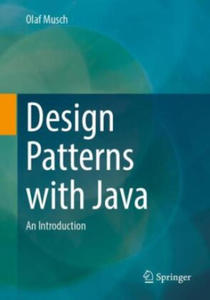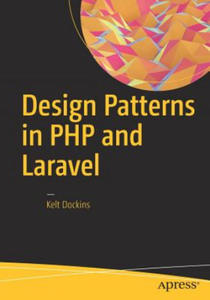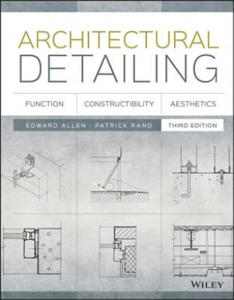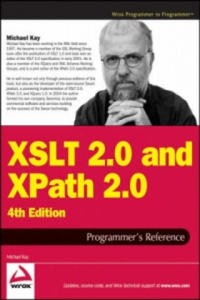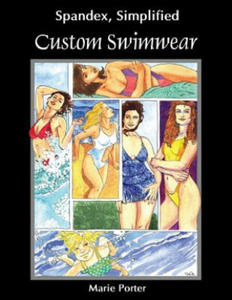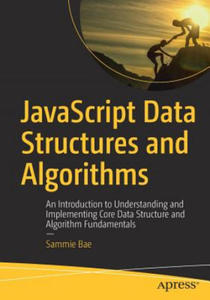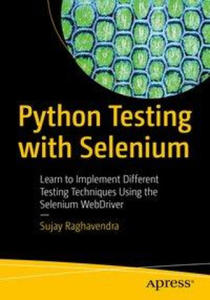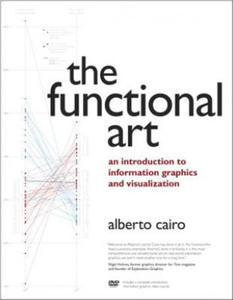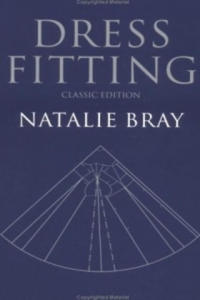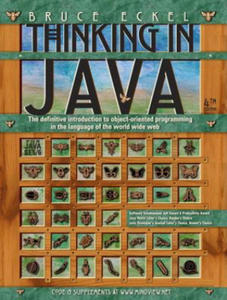libristo design patterns explained 4054035
- znaleziono 13 produktów w 1 sklepie
Design Patterns with Java Springer, Berlin
Książki / Literatura obcojęzyczna
A practical description of the software design patterns as they are mentioned in the 1994 book "Design Patterns - Elements of Reusable ObjectOriented Software" by the author group Gamma, Helm, Johnson and Vlissides (also called "Gang of Four", GoF for short). All patterns are explained in detail by means of examples and also critically appreciated. Furthermore, design principles of object-oriented programming are described and considered. All examples are commented in detail in the source code and are executable under Java 16. In part, newer features of Java up to and including version 16 are also explained and used.
Sklep: Libristo.pl
Design Patterns in PHP and Laravel APress
Książki / Literatura obcojęzyczna
This book teaches you design patterns in PHP and Laravel using real-world examples and plenty of humor. Too often design patterns are explained using tricky concepts, when in fact they are easy to use and can enrich your everyday development. Design Patterns in PHP and Laravel aims to break down tricky concepts into humorous and easy-to-recall details, so that you can begin using design patterns easily in your everyday work with PHP and Laravel. You will learn each of the original gang of four design patterns, and how they are relevant to modern PHP and Laravel development. Each pattern is covered with full examples of how it can be used. Written by a working developer who uses these patterns every day, you will easily be able to implement each pattern into your workflow and improve your development. What You Will Learn How to use the original gang of four design patterns in your PHP and Laravel developmentHow each pattern should be usedHow to solve problems when using the patternsHow to remember each pattern using mnemonics Who This Book Is For The person who will buy this book is likely using Laravel and PHP to do their job. They want to improve their understanding of design patterns.
Sklep: Libristo.pl
Islamic Geometric Design Thames & Hudson Ltd
Książki / Literatura obcojęzyczna
Islamic geometric designs are admired worldwide for their beauty and marvellous intricacy, yet in truth they are seldom understood. Indeed, their complexity and artistry can seem almost beyond the powers of human ingenuity. In this handsomely illustrated volume, artist and teacher Eric Broug analyses and explains these complex designs in their historical and physical context. His own original drawings accompany magnificent photographs of mosques, madrasas, palaces and tombs from the Islamic world, ranging from North Africa to Iran and Uzbekistan, and from the 8th to the 19th centuries. Chapters are devoted to each of the main families of geometric design fourfold, fivefold and sixfold and to the complex combined patterns. Every design is carefully explained, and illustrated with a wealth of stunning photographs and clear, meticulously detailed drawings. Readers can follow the design processes by which these patterns were created and even learn to reproduce and invent geometric patterns for themselves, using exactly the same tools as the Islamic craftsmen of old: a ruler and a pair of compasses.
Sklep: Libristo.pl
Graphic Design Thinking Princeton Architectural Press
Książki / Literatura obcojęzyczna
Creativity is more than an inborn talent; it is a hard-earned skill, and like any other skill, it improves with practice. Graphic Design Thinking: How to Define Problems, Get Ideas, and Create Form explores a variety of informal techniques ranging from quick, seat-of-the-pants approaches to more formal research methods for stimulating fresh thinking, and ultimately arriving at compelling and viable solutions. In the style with which author Ellen has come to been known hands-on, up-close approach to instructional design writing brainstorming techniques are grouped around the three basic phases of the design process: defining the problem, inventing ideas, and creating form. Creative research methods include focus groups, interviewing, brand mapping, and co-design. Each method is explained with a brief narrative text followed by a variety of visual demonstrations and case studies. Also included are discussions with leading professionals, including Art Chantry, Ivan Chermayeff, Jessica Helfand, Steven Heller, Abott Miller, Christoph Niemann, Paula Scher, and Martin Venezky, about how they get ideas and what they do when the well runs dry. The book is directed at working designers, design students, and anyone who wants to apply inventive thought patterns to everyday creative challenges.
Sklep: Libristo.pl
Architectural Detailing - Function, Constructibility, Aesthetics 3e John Wiley & Sons Inc
Książki / Literatura obcojęzyczna
The industry-standard guide to designing well-performing buildings Architectural Detailing systematically describes the principles by which good architectural details are designed. Principles are explained in brief, and backed by extensive illustrations that show you how to design details that will not leak water or air, will control the flow of heat and water vapor, will adjust to all kinds of movement, and will be easy to construct. This new third edition has been updated to conform to International Building Code 2012, and incorporates current knowledge about new material and construction technology. Sustainable design issues are integrated where relevant, and the discussion includes reviews of recent built works that extract underlying principles that can be the basis for new patterns or the alteration and addition to existing patterns. Regulatory topics are primarily focused on the US, but touch on other jurisdictions and geographic settings to give you a well-rounded perspective of the art and science of architectural detailing. In guiding a design from idea to reality, architects design a set of details that show how a structure will be put together.Good details are correct, complete, and provide accurate information to a wide variety of users. By demonstrating the use of detail patterns, this book teaches you how to design a building that will perform as well as you intend. * Integrate appropriate detailing into your designs * Learn the latest in materials, assemblies, and construction methods * Incorporate sustainable design principles and current building codes * Design buildings that perform well, age gracefully, and look great Architects understand that aesthetics are only a small fraction of good design, and that stability and functionality require a deep understanding of how things come together. Architectural Detailing helps you bring it all together with a well fleshed-out design that communicates accurately at all levels of the construction process.
Sklep: Libristo.pl
XSLT 2.0 and XPath 2.0 Programmer's Reference 4e John Wiley & Sons Inc
Książki / Literatura obcojęzyczna
This book is primarily a practical reference book for professional XSLT developers. It assumes no previous knowledge of the language, and many developers have used it as their first introduction to XSLT; however, it is not structured as a tutorial, and there are other books on XSLT that provide a gentler approach for beginners. The book does assume a basic knowledge of XML, HTML, and the architecture of the Web, and it is written for experienced programmers. There's no assumption that you know any particular language such as Java or Visual Basic, just that you recognize the concepts that all programming languages have in common. The book is suitable both for XSLT 1.0 users upgrading to XSLT 2.0, and for newcomers to XSLT. The book is also equally suitable whether you work in the Java or .NET world. As befits a reference book, a key aim is that the coverage should be comprehensive and authoritative. It is designed to give you all the details, not just an overview of the 20 percent of the language that most people use 80 percent of the time.It's designed so that you will keep coming back to the book whenever you encounter new and challenging programming tasks, not as a book that you skim quickly and then leave on the shelf. If you like detail, you will enjoy this book; if not, you probably won't. But as well as giving the detail, this book aims to explain the concepts, in some depth. It's therefore a book for people who not only want to use the language but who also want to understand it at a deep level. The book aims to tell you everything you need to know about the XSLT 2.0 language. It gives equal weight to the things that are new in XSLT 2.0 and the things that were already present in version 1.0. The book is about the language, not about specific products. However, there are appendices about Saxon (the author's own implementation of XSLT 2.0), about the Altova XSLT 2.0 implementation, and about the Java and Microsoft APIs for controlling XSLT transformations, which will no doubt be upgraded to handle XSLT 2.0 as well as 1.0. A third XSLT 2.0 processor, Gestalt, was released shortly before the book went to press, too late to describe it in any detail. But the experience of XSLT 1.0 is that there has been a very high level of interoperability between different XSLT processors, and if you can use one of them, then you can use them all.In the previous edition we split XSLT 2.0 and XPath 2.0 into separate volumes. The idea was that some readers might be interested in XPath alone. However, many bought the XSLT 2.0 book without its XPath companion and were left confused as a result; so this time, the material is back together. The XPath reference information is in self-contained chapters, so it should still be accessible when you use XPath in contexts other than XSLT. The book does not cover XSL Formatting Objects, a big subject in its own right. Nor does it cover XML Schemas in any detail. If you want to use these important technologies in conjunction with XSLT, there are other books that do them justice. This book contains twenty chapters and eight appendixes (the last of which is a glossary) organized into four parts. The following section outlines what you can find in each part, chapter, and appendix. Part I: Foundations: The first part of the book covers essential concepts. You should read these before you start coding.If you ignore this advice, as most people do, then you read them when you get to that trough of despair when you find it impossible to make the language do anything but the most trivial tasks. XSLT is different from other languages, and to make it work for you, you need to understand how it was designed to be used. Chapter 1: XSLT in Context: This chapter explains how XSLT fits into the big picture: how the language came into being and how it sits alongside other technologies. It also has a few simple coding examples to keep you alert. Chapter 2: The XSLT Processing Model: This is about the architecture of an XSLT processor: the inputs, the outputs, and the data model. Understanding the data model is perhaps the most important thing that distinguishes an XSLT expert from an amateur; it may seem like information that you can't use immediately, but it's knowledge that will stop you making a lot of stupid mistakes. Chapter 3: Stylesheet Structure: XSLT development is about writing stylesheets, and this chapter takes a bird's eye view of what stylesheets look like.It explains the key concepts of rule-based programming using templates, and explains how to undertake programming-in-the-large by structuring your application using modules and pipelines. Chapter 4: Stylesheets and Schemas: A key innovation in XSLT 2.0 is that stylesheets can take advantage of knowledge about the structure of your input and output documents, provided in the form of an XML Schema. This chapter provides a quick overview of XML Schema to describe its impact on XSLT development. Not everyone uses schemas, and you can skip this chapter if you fall into that category. Chapter 5: The Type System: XPath 2.0 and XSLT 2.0 offer strong typing as an alternative to the weak typing approach of the 1.0 languages. This means that you can declare the types of your variables, functions, and parameters, and use this information to get early warning of programming errors. This chapter explains the data types available and the mechanisms for creating user-defined types. Part II: XSLT and XPath Reference: This section of the book contains reference material, organized in the hope that you can easily find what you need when you need it.It's not designed for sequential reading, though you might well want to leaf through the pages to discover what's there. Chapter 6: XSLT Elements: This monster chapter lists all the XSLT elements you can use in a stylesheet, in alphabetical order, giving detailed rules for the syntax and semantics of each element, advice on usage, and examples. This is probably the part of the book you will use most frequently as you become an expert XSLT user. It's a "no stone unturned" approach, based on the belief that as a professional developer you need to know what happens when the going gets tough, not just when the wind is in your direction. Chapter 7: XPath Fundamentals: This chapter explains the basics of XPath: the low-level constructs such as literals, variables, and function calls. It also explains the context rules, which describe how the evaluation of XPath expressions depends on the XSLT processing context in which they appear. Chapter 8: XPath: Operators on Items: XPath offers the usual range of operators for performing arithmetic, boolean comparison, and the like.However, these don't always behave exactly as you would expect, so it's worth reading this chapter to see what's available and how it differs from the last language that you used. Chapter 9: XPath: Path Expressions: Path expressions are what make XPath special; they enable you to navigate around the structure of an XML document. This chapter explains the syntax of path expressions, the 13 axes that you can use to locate the nodes that you need, and associated operators such as union, intersection, and difference. Chapter 10: XPath: Sequence Expressions: Unlike XPath 1.0, in version 2.0 all values are sequences (singletons are just a special case). Some of the most important operators in XPath 2.0 are those that manipulate sequences, notably the "for" expression, which translates one sequence into another by applying a mapping. Chapter 11: XPath: Type Expressions: The type system was explained in Chapter 5; this chapter explains the operations that you can use to take advantage of types. This includes the "cast" operation which is used to convert values from one type to another.A big part of this chapter is devoted to the detailed rules for how these conversions are done.Chapter 12: XSLT Patterns: This chapter returns from XPath to a subject that's specific to XSLT. Patterns are used to define template rules, the essence of XSLT's rule-based programming approach. The reason for explaining them now is that the syntax and semantics of patterns depends strongly on the corresponding rules for XPath expressions. Chapter 13: The Function Library: XPath 2.0 includes a library of functions that can be called from any XPath expression; XSLT 2.0 extends this with some additional functions that are available only when XPath is used within XSLT. The library has grown immensely since XPath 1.0. This chapter provides a single alphabetical reference for all these functions. Chapter 14: Regular Expressions: Processing of text is an area where XSLT 2.0 and XPath 2.0 are much more powerful than version 1.0, and this is largely through the use of constructs that exploit regular expressions. If you're familiar with regexes from languages such as Perl, this chapter tells you how XPath regular expressions differ. If you're new to the subject, it explains it from first principles.Chapter 15: Serialization: Serialization in XSLT means the ability to generate a textual XML document from the tree structure that's manipulated by a stylesheet. This isn't part of XSLT processing proper, so (following W3C's lead) it's separated it into its own chapter. You can control serialization from the stylesheet using an declaration, but many products also allow you to control it directly via an API. Part III: Exploitation: The final section of the book is advice and guidance on how to take advantage of XSLT to write real applications. It's intended to make you not just a competent XSLT coder, but a competent designer too. The best way of learning is by studying the work of others, so the emphasis here is on practical case studies. Chapter 16: Extensibility: This chapter describes the "hooks" provided in the XSLT specification to allow vendors and users to plug in extra functionality. The way this works will vary from one implementation to another, so we can't cover all possibilities, but one important aspect that the chapter does cover is how to use such extensions and still keep your code portable.Chapter 17: Stylesheet Design Patterns: This chapter explores a number of design and coding patterns for XSLT programming, starting with the simplest "fill-in-the-blanks" stylesheet, and extending to the full use of recursive programming in the functional programming style, which is needed to tackle problems of any computational complexity. This provides an opportunity to explain the thinking behind functional programming and the change in mindset needed to take full advantage of this style of development. Chapter 18: Case Study: XMLSpec: XSLT is often used for rendering documents, so where better to look for a case study than the stylesheets used by the W3C to render the XML and XSLT specifications, and others in the same family, for display on the web? The resulting stylesheets are typical of those you will find in any publishing organization that uses XML to develop a series of documents with a compatible look-and-feel. Chapter 19: Case Study: A Family Tree: Displaying a family tree is another typical XSLT application.This example with semi-structured data-a mixture of fairly complex data and narrative text-that can be presented in many different ways for different audiences. It also shows how to tackle another typical XSLT problem, conversion of the data into XML from a legacy text-based format. As it happens, this uses nearly all the important new XSLT 2.0 features in one short stylesheet. But another aim of this chapter is to show a collection of stylesheets doing different jobs as part of a complete application. Chapter 20: Case Study: Knight's Tour: Finding a route around a chessboard where a knight visits every square without ever retracing its steps might sound a fairly esoteric application for XSLT, but it's a good way of showing how even the most complex of algorithms are within the capabilities of the language. You may not need to tackle this particular problem, but if you want to construct an SVG diagram showing progress against your project plan, then the problems won't be that dissimilar. Part IV: Appendices: A ppendix A: XPath 2.0 Syntax Summary: Collects the XPath grammar rules and operator precedences into one place for ease of reference.Appendix B: Error Codes: A list of all the error codes defined in the XSLT and XPath language specifications, with brief explanations to help you understand what's gone wrong. Appendix C: Backward Compatibility: The list of things you need to look out for when converting applications from XSLT 1.0. Appendix D: Microsoft XSLT Processors: Although the two Microsoft XSLT processors don't yet support XSLT 2.0, we thought many readers would find it useful to have a quick summary here of the main objects and methods used in their APIs. Appendix E: JAXP: the Java API for XML Processing: JAXP is an interface rather than a product. Again, it doesn't have explicit support yet for XSLT 2.0, but Java programmers will often be using it in XSLT 2.0 projects, so the book includes an overview of the classes and methods available. Appendix F: Saxon: At the time of writing Saxon (developed by the author of this book) provides the most comprehensive implementation of XSLT 2.0 and XPath 2.0, so its interfaces and extensions are covered in some detail. Appendix G: Altova: Altova, the developers of XML Spy, have an XSLT 2.0 processor that can be used either as part of the development environment or as a freestanding component.This appendix gives details of its interfaces. Appendix H: Glossary Note: CD-ROM/DVD and other supplementary materials are not included as part of eBook file.
Sklep: Libristo.pl
Spandex Simplified Celebration Generation
Książki / Literatura obcojęzyczna
"Custom Swimwear" is the sixth title in Marie Porter's "Spandex Simplified" series, and is all about designing and creating flattering, comfortable, and durable swimwear. This sewing manual is written from the experience of not only a spandex designer, but a former "performance" athlete. Written in layman terms, "Custom Swimwear" features carefully explained, step-by-step instructions and more than 250 full colour photos and diagrams. Requiring only basic sewing knowledge to get started, beginner and advanced seamstresses alike can enjoy using this book... and produce spectacular results from it. Learn how to design swimsuits that flatter any body type and how to alter patterns for shape, size, and style. Learn the tips, tricks, and techniques to make many of the design elements that can be used to design and create almost any style of swimsuit imaginable!
Sklep: Libristo.pl
JavaScript Data Structures and Algorithms APress
Książki / Literatura obcojęzyczna
Explore data structures and algorithm concepts relevant to JavaScript and their relation to everyday JavaScript development. It is crucial for JavaScript developers to understand how data structures work and how to design algorithms, and this book and the accompanying code provide that essential foundation.You'll discover how to implement data structures such as hash tables, linked lists, stacks, queues, trees, and graphs. You'll also learn how a URL shortener, such as bit.ly, is developed and what is happening to the data as a PDF is uploaded to a webpage. This book covers the practical applications of data structures and algorithms to encryption, searching, sorting, and pattern matching.A basic understanding of these ideas is essential to any JavaScript developer wishing to analyze and build great software solutions - JavaScript Data Structures and Algorithms will encourage you to start developing your knowledge and applying it to your JavaScript projects today.What You'll LearnReview core data structure fundamentals: arrays, linked-lists, trees, heaps, graphs, and hash-tableReview core algorithm fundamentals: search, sort, recursion, breadth/depth first search, dynamic programming, bitwise operatorsExamine how the core data structure and algorithms knowledge fits into context of JavaScript explained using prototypical inheritance and native JavaScript objects/data typesTake a high-level look at commonly used design patterns in JavaScriptWho This Book Is For Existing web developers and software engineers seeking to develop or revisit their fundamental data structures knowledge; beginners and students studying JavaScript independently or via a course or coding bootcamp.
Sklep: Libristo.pl
Python Testing with Selenium APress
Książki / Literatura obcojęzyczna
Implement different testing techniques using Selenium WebDriver with the Python programming language. This quick reference provides simple functional test cases with a syntax-based approach for Selenium WebDriver. You'll begin by reviewing the basics of Selenium WebDriver and its architectural design history and then move on to the configuration and installation of Selenium library for different web browsers, including the basic commands needed to start test scripts in various browsers. You'll review action commands of keyboard and mouse for testing user interactions in a web page and see how hyperlinks are tested. The book also examines various web elements using eight different locators provided by Selenium to help you choose the one best suited to your needs. All Python scripts are ready to test real examples, all of which are explained thoroughly with problem statements. You'll use different Python design patterns to automate test scripts that can be incorporated with Selenium. In the end, Python Testing with Selenium will provide you with the expertise to write your own test cases in future. What You'll Learn Install and configure Selenium WebDriver with Python for different web-browsers Review basic commands of Selenium Locate web elements Work with UI based web elements Assert web elements and handle exceptions Write test scripts in Page Object Model Write test cases with Unittest framework Who This Book Is For Python developers/testers who want to test their web applications
Sklep: Libristo.pl
Functional Art, The Pearson Education
Książki / Literatura obcojęzyczna
Unlike any time before in our lives, we have access to vast amounts of free information. With the right tools, we can start to make sense of all this data to see patterns and trends that would otherwise be invisible to us. By transforming numbers into graphical shapes, we allow readers to understand the stories those numbers hide. In this practical introduction to understanding and using information graphics, you'll learn how to use data visualizations as tools to see beyond lists of numbers and variables and achieve new insights into the complex world around us. Regardless of the kind of data you're working with-business, science, politics, sports, or even your own personal finances-this book will show you how to use statistical charts, maps, and explanation diagrams to spot the stories in the data and learn new things from it.You'll also get to peek into the creative process of some of the world's most talented designers and visual journalists, including Conde Nast Traveler's John Grimwade, National Geographic Magazine's Fernando Baptista, The New York Times' Steve Duenes, The Washington Post's Hannah Fairfield, Hans Rosling of the Gapminder Foundation, Stanford's Geoff McGhee, and European superstars Moritz Stefaner, Jan Willem Tulp, Stefanie Posavec, and Gregor Aisch. The book also includes a DVD-ROM containing over 90 minutes of video lessons that expand on core concepts explained within the book and includes even more inspirational information graphics from the world's leading designers.The first book to offer a broad, hands-on introduction to information graphics and visualization, The Functional Art reveals: * Why data visualization should be thought of as "functional art" rather than fine art * How to use color, type, and other graphic tools to make your information graphics more effective, not just better looking * The science of how our brains perceive and remember information * Best practices for creating interactive information graphics * A comprehensive look at the creative process behind successful information graphics * An extensive gallery of inspirational work from the world's top designers and visual artists On the DVD-ROM: In this introductory video course on information graphics, Alberto Cairo goes into greater detail with even more visual examples of how to create effective information graphics that function as practical tools for aiding perception. You'll learn how to: incorporate basic design principles in your visualizations, create simple interfaces for interactive graphics, and choose the appropriate type of graphic forms for your data.Cairo also deconstructs successful information graphics from The New York Times and National Geographic magazine with sketches and images not shown in the book.
Sklep: Libristo.pl
Dress Fitting - Basic Principles and Practice (Classic Edition) John Wiley and Sons Ltd
Książki / Literatura obcojęzyczna
The techniques Natalie Bray pioneered and perfected revolutionised dress pattern designing, assisting the rise of the modern fashion industry. Her teaching has had a profound influence on design, production and education and her works are classics: fashions change but the principles of designing patterns in the flat do not. To be able to understand what is happening when observing a defect is already to have an idea of how to correct it. Here problems of figure, posture and of pattern adjustment are clearly explained so that the dressmaker can, with the confidence that comes with practical experience, learn to identify a defect and choose the best method of dealing with it.
Sklep: Libristo.pl
Learn to Quilt IMM Lifestyle Books
Książki / Literatura obcojęzyczna
Patchwork quilting has long been a popular craft, but it is now reaching an even wider audience through the imaginative quilts and covers that are on sale commercially in home furnishings departments."Learn to Quilt" is the perfect guide for the complete beginner, starting with a really basic hand quilt, then progressing to simple rotary cutting and machine piecing through to slightly more complex block patterns and some simple design work. Each of the techniques is shown in clear step-by-step photographs with concise instructions, and is followed by a project so the reader can build up skills as progress is made through the book. Each project is illustrated with clear and colourful diagrams. A whole range of delightful patchwork quilts for the home can be made following the techniques explained, from a simple baby's cot quilt to an eyecatching throw or a colourful and cosy cushion quilt. All are made in clear, light, fresh fabrics in 100 per cent cotton. Not only does this book teach new skills, it also provides projects for fabulous quilts to display in contemporary homes.
Sklep: Libristo.pl
Thinking in Java Pearson Education
Książki / Literatura obcojęzyczna
"Thinking in Java should be read cover to cover by every Java programmer, then kept close at hand for frequent reference. The exercises are challenging, and the chapter on Collections is superb! Not only did this book help me to pass the Sun Certified Java Programmer exam; it's also the first book I turn to whenever I have a Java question." -Jim Pleger, Loudoun County (Virginia) Government"Much better than any other Java book I've seen. Make that 'by an order of magnitude'...Very complete, with excellent right-to-the-point examples and intelligent, not dumbed-down, explanations...In contrast to many other Java books I found it to be unusually mature, consistent, intellectually honest, well-written, and precise. IMHO, an ideal book for studying Java." -Anatoly Vorobey, Technion University, Haifa, Israel"Absolutely one of the best programming tutorials I've seen for any language." -Joakim Ziegler, FIX sysop"Thank you again for your awesome book. I was really floundering (being a non-C programmer), but your book has brought me up to speed as fast as I could read it.It's really cool to be able to understand the underlying principles and concepts from the start, rather than having to try to build that conceptual model through trial and error. Hopefully I will be able to attend your seminar in the not-too-distant future." -Randall R. Hawley, automation technician, Eli Lilly & Co."This is one of the best books I've read about a programming language...The best book ever written on Java." -Ravindra Pai, Oracle Corporation, SUNOS product line"Bruce, your book is wonderful! Your explanations are clear and direct. Through your fantastic book I have gained a tremendous amount of Java knowledge. The exercises are also fantastic and do an excellent job reinforcing the ideas explained throughout the chapters. I look forward to reading more books written by you. Thank you for the tremendous service that you are providing by writing such great books. My code will be much better after reading Thinking in Java. I thank you and I'm sure any programmers who will have to maintain my code are also grateful to you." -Yvonne Watkins, Java artisan, Discover Technologies, Inc."Other books cover the what of Java (describing the syntax and the libraries) or the how of Java (practical programming examples). Thinking in Java is the only book I know that explains the why of Java: Why it was designed the way it was, why it works the way it does, why it sometimes doesn't work, why it's better than C++, why it's not. Although it also does a good job of teaching the what and how of the language, Thinking in Java is definitely the thinking person's choice in a Java book." -Robert S. StephensonAwards for Thinking in Java2003 Software Development Magazine Jolt Award for Best Book 2003 Java Developer's Journal Reader's Choice Award for Best Book 2001 JavaWorld Editor's Choice Award for Best Book 2000 JavaWorld Reader's Choice Award for Best Book 1999 Software Development Magazine Productivity Award 1998 Java Developer's Journal Editor's Choice Award for Best Book Thinking in Java has earned raves from programmers worldwide for its extraordinary clarity, careful organization, and small, direct programming examples. From the fundamentals of Java syntax to its most advanced features, Thinking in Java is designed to teach, one simple step at a time.* The classic object-oriented introduction for beginners and experts alike, fully updated for Java SE5/6 with many new examples and chapters! * Test framework shows program output. * Design patterns are shown with multiple examples throughout: Adapter, Bridge, Chain of Responsibility, Command, Decorator, Facade, Factory Method, Flyweight, Iterator, Data Transfer Object, Null Object, Proxy, Singleton, State, Strategy, Template Method, and Visitor. * Introduction to XML for data transfer; SWT, Flash for user interfaces. * Completely rewritten concurrency chapter gives you a solid grasp of threading fundamentals. *500+ working Java programs in 700+ compiling files, rewritten for this edition and Java SE5/6. * Companion web site includes all source code, annotated solution guide, weblog, and multimedia seminars. * Thorough coverage of fundamentals; demonstrates advanced topics. * Explains sound object-oriented principles. *Hands-On Java Seminar CD available online, with full multimedia seminar by Bruce Eckel. * Live seminars, consulting, and reviews available. See www.MindView.net Download seven free sample chapters from Thinking in Java, Fourth Edition. Visit http://mindview.net/Books/TIJ4.
Sklep: Libristo.pl
Sklepy zlokalizowane w miastach: Warszawa, Kraków, Łódź, Wrocław, Poznań, Gdańsk, Szczecin, Bydgoszcz, Lublin, Katowice
Szukaj w sklepach lub całym serwisie
1. Sklepy z libristo pl design patterns explained 4054035
2. Szukaj na wszystkich stronach serwisu
t1=0.027, t2=0, t3=0, t4=0, t=0.028

